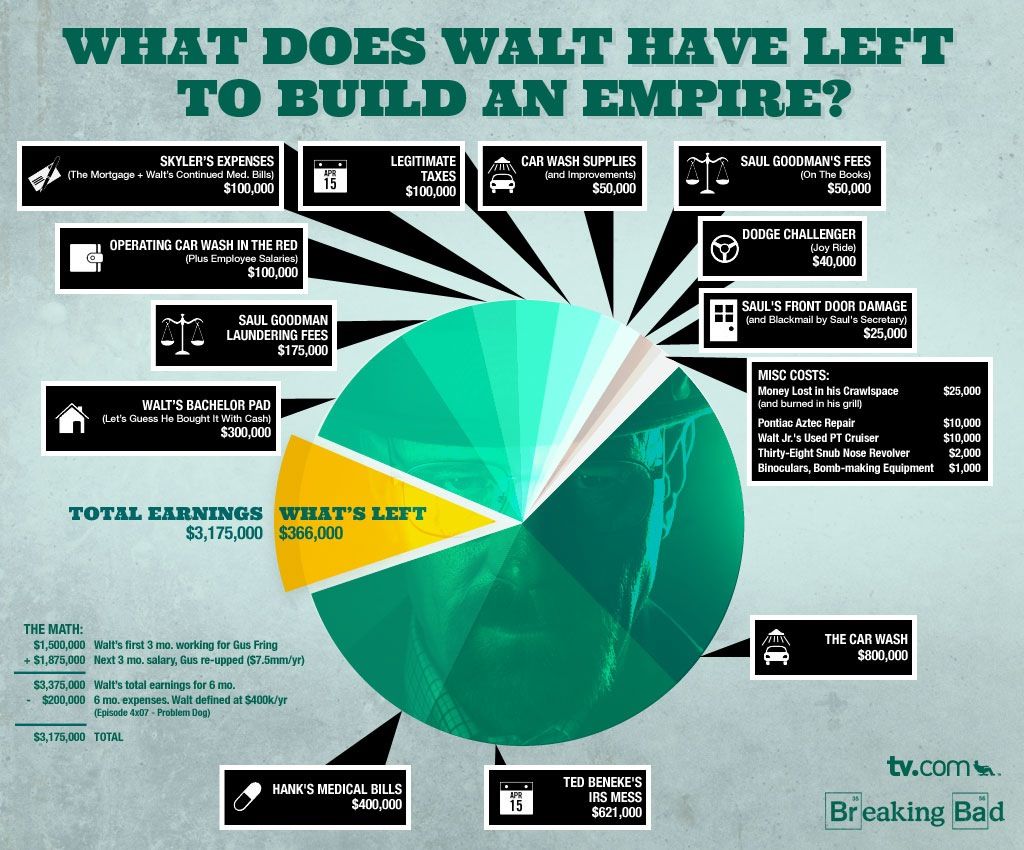Breaking Bad, the critically acclaimed TV series, has not only captivated audiences worldwide with its gripping storyline and unforgettable characters but also made a significant impact financially. From its humble beginnings to its explosive finale, the show has raked in substantial profits, making it one of the most successful television series of all time. But just how much did Breaking Bad make, and what factors contributed to its financial triumph? In this article, we'll delve into the intricate web of revenue streams and examine the strategies that propelled Breaking Bad to unprecedented success.
When Breaking Bad first premiered in 2008, few could have predicted the phenomenon it would become. The show's creator, Vince Gilligan, had a vision of transforming a mild-mannered chemistry teacher, Walter White, into a notorious drug kingpin. This unique concept, combined with stellar performances from actors like Bryan Cranston and Aaron Paul, quickly garnered a dedicated fan base. However, it wasn't just the compelling narrative that contributed to the show's financial success. Strategic distribution deals, merchandise sales, and syndication agreements all played a crucial role in boosting the show's earnings.
As the series progressed, Breaking Bad's popularity soared, leading to a surge in viewership and increased demand for related content. The show's producers capitalized on this momentum by releasing DVD and Blu-ray sets, launching spin-offs, and engaging in lucrative licensing agreements. These efforts not only generated additional revenue but also solidified Breaking Bad's legacy as a cultural phenomenon. By the time the series concluded in 2013, Breaking Bad had cemented its place in television history and amassed a substantial fortune, leaving fans and industry insiders alike wondering: how much did Breaking Bad make, and what lessons can be learned from its incredible journey?
Who Created Breaking Bad?
Breaking Bad was created by Vince Gilligan, a seasoned writer and producer known for his work on The X-Files. Gilligan's vision for the show was to explore the transformation of a protagonist into an antagonist, a concept that had rarely been seen on television before. His unique storytelling approach, combined with a talented cast and crew, set the stage for Breaking Bad's success.
What Made Breaking Bad So Popular?
Several factors contributed to Breaking Bad's popularity:
- A compelling and original storyline that kept viewers engaged.
- Outstanding performances by the cast, particularly Bryan Cranston and Aaron Paul.
- High production quality and attention to detail.
- Effective marketing strategies that generated buzz and anticipation.
- Positive word-of-mouth and critical acclaim, leading to numerous awards.
How Was Breaking Bad Distributed?
Breaking Bad was initially aired on AMC, a cable network known for its high-quality programming. The show's distribution strategy included:
- Broadcasting on AMC, which provided a platform for reaching a wide audience.
- Availability on streaming platforms, such as Netflix, which helped attract new viewers.
- International distribution deals, allowing global audiences to access the show.
What Were the Revenue Streams for Breaking Bad?
The financial success of Breaking Bad can be attributed to various revenue streams:
- Advertising revenue from airing the show on AMC.
- Sales of DVD and Blu-ray sets.
- Licensing and merchandise deals, including clothing, memorabilia, and collectibles.
- Spin-offs and related media, such as Better Call Saul.
- Syndication agreements for reruns and international broadcasts.
How Much Did Breaking Bad Make from Merchandise Sales?
Merchandise sales were a significant contributor to Breaking Bad's financial success. The show's iconic imagery and memorable characters lent themselves well to a wide range of merchandise, including:
- T-shirts and apparel featuring popular quotes and graphics from the show.
- Collectible figurines and action figures of fan-favorite characters.
- Posters, artwork, and other memorabilia for dedicated fans.
- Branded products, such as "Los Pollos Hermanos" items and Heisenberg hats.
These merchandise sales generated millions of dollars in revenue, further boosting the overall earnings of Breaking Bad.
How Did Breaking Bad's Spin-Offs Contribute to Its Earnings?
The success of Breaking Bad paved the way for spin-offs and related media, most notably Better Call Saul. This prequel series focused on the character Saul Goodman, played by Bob Odenkirk, and provided additional revenue streams for the franchise. Other spin-offs and related projects, such as El Camino: A Breaking Bad Movie, also contributed to the overall earnings.
How Much Did Breaking Bad Make After Its Finale?
Even after the series concluded in 2013, Breaking Bad continued to generate revenue through:
- Syndication deals, allowing the show to be aired on various networks and platforms.
- Ongoing merchandise sales, as the show's popularity persisted.
- Continued licensing agreements for streaming and international distribution.
These post-finale earnings helped solidify Breaking Bad's financial legacy and ensured its lasting impact on the television industry.
What Lessons Can Be Learned from Breaking Bad's Financial Success?
Breaking Bad's financial success offers several valuable lessons for future television productions:
- Investing in high-quality storytelling and production can lead to long-term profitability.
- Diversifying revenue streams, such as merchandise and spin-offs, can maximize earnings.
- Leveraging modern distribution methods, like streaming platforms, can expand the audience base.
- Building a strong brand and fan community can sustain engagement and revenue after the show's conclusion.
In conclusion, Breaking Bad's financial achievements are a testament to the power of innovative storytelling and strategic business decisions. The show's legacy continues to influence the television industry and serves as a benchmark for future productions.




